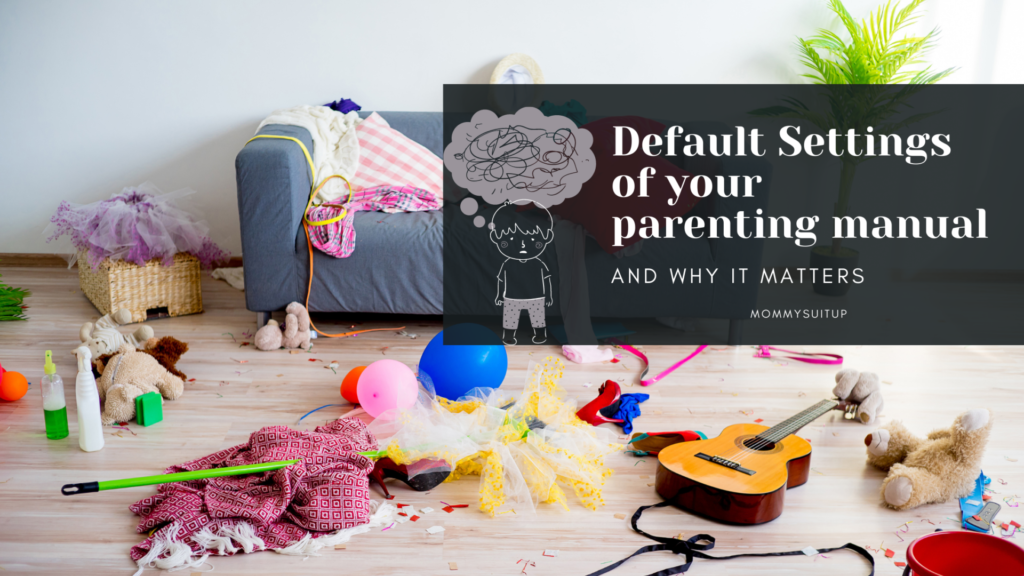There are those days:
The home is a mess, the kid doesn’t wanna get in front of the screen (school, I mean), there’s a meeting in five, the little one doesn’t wanna step out of the tub, and the doorbell rings and the dog is manic – refusing to get into the crate.
Excuse the specifics – but you know what I mean. The pressure is building up – and you need to act…

What do you say or do in that moment?
What was your go-to-mode when life acted out and you probably forgot to pause, breath and respond?
That, my love, is your default setting.
You might recognize your childhood in the first and natural response to situations. It is after all the way we were raised, the language we heard our caregivers and parents use, the responses we received to our words/action & behavior.
It is the easy way, definitely. Because it comes to us automatically, zero effort!
Just not the best possible way; Nor is it the way that works for your child.
For most parents who are looking to practice conscious parenting, we know our default settings are not in line with the parent we aspire to become. The one who responds rather than reacts to situations.

So is it possible to change our default settings?
- We need to get to know ourselves better, recognize our patterns and triggers, so when we see ourselves thrown into situations with heightened emotions, we can warn ourselves to breath; walk away; sip some water; bite our tongue, distract ourselves…We can reach out for ear plugs to calm our nerves, as soon as they are getting playful and loud. We can remind ourselves about the breakfast we skipped and grab a snackAs we catch ourselves snapping…And we tell ourselves to disengage when our kid attempts to pull us into an argument vortex.
- Take conscious decisions that come from knowing we can do better…believe that we can break the cycle of factory settings and create better voices/better defaults for our kids. It must be as simple as putting away shoes that are tight or clothes that are worn out – flawed behavior too must go.
- Three is practice. You try. You fail. Yet you try again till it becomes a way of life for you and for your child. Know that everyday will bring a different challenge, somedays take you a couple of steps back, yet you start over – over and over and over again.
Till deep breaths and gentle responses become a way of life – our default settings.